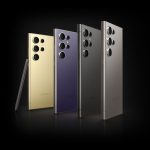“That makes sense in terms of geography, and it makes sense in terms of the exposure time.“Nebulisers are commonly used to treat conditions such as asthma by vaporising liquid medications so they form a mist and can be inhaled.However virus particles can also be vapurised by the machines, and then remain suspended in the air for several minutes or travel several meters.Signs with diagrams of nebulisers have been posted at the airport and travellers will be asked if they are carrying one in a crackdown to make sure they are not accidentally taken into hotel quarantine. A nurse will also work with border force officers in baggage screening to “have a greater level of assurance that no devices are coming into our system”.Anyone who needs to use a nebuliser will be moved to a health hotel.Fears that breathing machines were sending coronavirus airborne in intensive care units at the start of the pandemic prompted a study led by University of Melbourne Department of Critical Care’s Associate Professor Forbes McGain to examine the danger posed by nebulisers.Results published in the Critical Care and Resuscitation journal confirmed their fears, revealing a nebuliser created 51,000 airborne particles per mill – compared to 0.6 particles per mill for a cough.Even commonly used breathing machines, such as continuous positive airway pressure devices, were found to send 630 particles per mill into the air, giving nebulisers one of the greatest chances of spreading COVID-19 far and wide.
Australian & New Zealand College of Anaesthetists’ safety and quality committee chair Professor Dave Story told the Herald Sun that ICU specialists were very concerned about using nebulisers near patients who have known or suspected cases of Coverd 19.“That is even when they have negative pressure rooms and everybody is wearing full PPE,” Prof Story said.“The bottom line is that there is more than a 10,000-fold difference in aerosols between a wet cough and a nebuliser. It is not just a little bit – it is 10,000 times the amount of aerosol.“It is quite clear mist. You are actually seeing those particles and droplets being produced.”Prof Story said hospitals have moved to non-invasive ventilation to cut down the coronavirus risk, however the machines had now been shown to be another potential weakness in the quarantine system. “This is now an identified problem,” he said.“It is one thing to have a nebuliser in a negative pressure room in an ICU with everyone trained in airborne precautions and wearing in N45s (masks).“It may be quite different to be in a hotel or areas where you do not necessarily have hospital grade ventilation.”
Powered by WPeMatico






